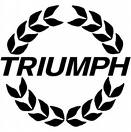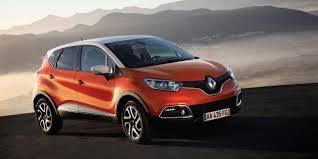


This edition of the Triumph TR7 2.0 8V is the 4 speed / Manual version and was first brought out in 1975. This was at around the same time as the introduction of the 1976 Porsche 911 Carrera 3.0 and the 1975 Lotus Esprit S1 2.0.This particular Triumph TR7 has a 1998cc Naturally Aspirated Petrol powerplant with 4 cylinders in a St formation.
The TR7 shares its Petrol St4 engine configuration with the likes of the 2019 Ariel Atom 4 2.0 Turbo and the 2013 Caterham 7 620 R 2.0 L Supercharged. If you're looking for other fast cars which share the TR7's Rear Wheel Drive, Coupe combination then how about the 1982 Fiat X1/9 1.5 8V or the 1965 Aston-Martin DB6 1965.
Weighing in at 1000 kgs (2204 lbs) this makes the Triumph TR7 2.0 8V in the same weight category as the 2014 Abarth 695 Biposto 1.4 Turbo or the give or take 50kg.
In terms of power the 1998cc 8V St4 engine produces 105 bhp (78 kW) @ 5500 rpm similar to the 2017 Ford Fiesta 1.5 TDCi ST-Line 120 (118 bhp) or the 2013 Skoda Rapid 1.4 tsi Spaceback (120 bhp).
The Naturally Aspirated St4 throws out 119 lb-ft (161.3 Nm) @ 3500 rpm placing it with cars of similar torque performance figures such as the 2013 Renault Captur 1.2 Turbo TCe 120 EDC (140 lb-ft) or the 2012 Mini Cooper Paceman (118 lb-ft).
If one combines the weight with power or torque performance for the Triumph TR7 you can get a better idea of it's real world performance.
![Seat Ibiza Cupra 1.9 TDI - [2004] image Seat Ibiza Cupra 1.9 TDI - [2004] image](/editionimages/1964.jpg)
The 2004 Seat Ibiza Cupra 1.9 TDI (130.0 bhp per ton) has similar Bhp Per Ton stats as the Triumph TR7.
The Triumph TR7 has a Power to weight ratio of 105.0 bhp per ton and 119.0 lb-ft per ton. Bhp Per Ton figures of the 1975 TR7 competing with the 2004 Seat Ibiza Cupra 1.9 TDI (130.0 bhp per ton) or the 1991 Bentley Continental R 6.8 V8 Turbo (130.0 bhp per ton).
If you agree with the late great Carroll Shelby then arguably an even better indicator of potential performance, Torque. Use weight as well and you end up with - Torque per ton, with the Triumph TR7 generating around 119.0 lb-ft per ton. If you're curious as to what other cars have as much torque to weight then look no further than the 1968 Alpine A110 1300 (144.0 lb-ft per ton) or the 2017 Dodge Challenger GT 3.6 V6 AWD (143.8 lb-ft per ton).
With a 0-60mph time of 9.80 secs or a 0-100km/h (0-62mph) of 10.1 secs, this made the Triumph TR7 2.0 8V as fast as the 2012 Lexus CT 200h 1.8L (9.80 secs) the 1980 Ford Mustang M81 Mclaren 2.3 Turbo (9.80 secs) the 1979 Ford Mustang Indianapolis 500 Pace Car Replica Turbo (9.80 secs) the or the 1979 Ford Mustang Cobra 2.3 V6 Turbo (9.80 secs). This Triumph TR7 2.0 8V is also faster than the 2001 Citroen C5 2.2 HDi 16v (9.90 secs) the 1997 Citroen Saxo 1.6i VTR (9.90 secs) the 1980 Nissan Skyline Hardtop 2000 Turbo GT-E (9.90 secs) the and the 1979 Dodge Magnum GT 5.9L V8 (9.90 secs).
When talking about the performance of the Triumph TR7 on the drag strip it can reach a quarter mile in an estimated 17.46 secs @ 78.3 mph. Similar performance down the quarter mile can be found with the the 1992 Peugeot 309 1.9 GTi 16v (17.40 secs), the 2008 Saab 9-3 2.8t Aero Convertible (17.42 secs), and the 1967 Cadillac Eldorado 7.0l V8 Hardtop Coupe (17.42 secs).
Modern performance cars are often artificially restricted to 155mph. The 1975 version of the Triumph TR7 2.0 8V has a maximum speed of 109mph.
If maxing out your car on the AutoBahn is your thing and you're wondering what's faster than the 1975 Triumph TR7 2.0 8V then how about the 2009 KIA Borrego 4.6 V8 AWD (120 mph), the 2008 Ford Fiesta 1.6 Zetec S (120 mph), or the 2006 Pontiac Solstice Coupe 2.4 16V (120 mph).










Bentley Continental GT 6.0 W12 Turbo
Engine: Turbo Petrol | 5950cc 48v W12
Top Speed: 207 mph
0-60mph: 3.60 seconds

Renault 11 1.4 Turbo
Engine: Turbo Petrol | 1397cc 8v St4
Top Speed: 186.6 kph
0-100kph: 9.0 seconds



















